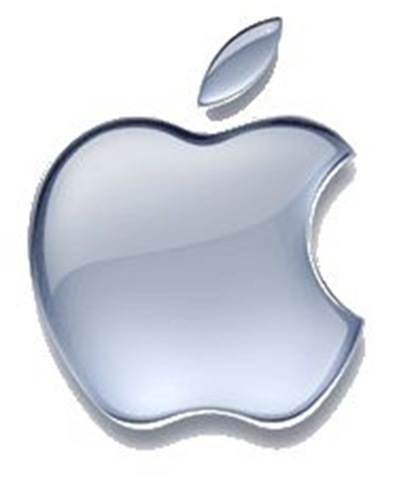 |
| [IBM Logo, courtesy IBM] |
Abstract:
As the misguided U.S. economy continues to run up massive debt and continue massive trade deficit, the sell-off of U.S. High Technology assets continues to non-U.S. companies, fat with outsourcing cash. Lenovo, a Chinese company, continues their purchases in the United States of inventors of technologyu.
Chinese Lenovo Purchasing U.S. Hard Technology
Chinese global company Lenovo has been purchasing their way into the U.S. market through many technologies essentially invented in the United States. IBM seems to be the most significant seller.
 |
| [IBM PC, courtesy Wikipedia] |
- 2005-05-01 - PC Division acquired from IBM (PC's and ThinkPad Laptops)
Chinese computer maker Lenovo has completed its $1.75 billion purchase of IBM’s personal computer division, creating the world’s third-largest PC maker, the company said Sunday. The deal — one of the biggest foreign acquisitions ever by a Chinese company
- 2006-04-10 - Lenovo makes break with the IBM brand (on PC's, not ThinkPad Laptops)
Since Lenovo took over the IBM personal computer business on May 1, 2005, the company's advertising and marketing efforts have excluded IBM almost entirely. The four television spots that Lenovo ran during the Turin Winter Olympics, for example, never mentioned IBM at all. In fact, the only connection to the iconic brand is the IBM logo, which still adorns Lenovo's ThinkPad laptops.
- 2013-01-07 - Lenovo to create ThinkPad-focused business unit to compete at the high end
Lenovo is reorganizing its operations into two business groups... As part of the restructuring, it will create two new divisions, Lenovo Business Group and Think Business Group.The reorganization, which will be completed on April 1 [2013]
- 2014-01-23- Lenovo to buy IBM's x86 server business for $2.3bn (PC Servers)
Lenovo and IBM announced on Thursday they have signed a definitive agreement that will see the Chinese hardware giant acquire the IBM's x86 server business for the tidy sum of $2.3bn, with approximately $2bn to be paid in cash and the balance in Lenovo stock.
Adding to the PC business Lenovo acquired from IBM in 2005, Lenovo will take charge of IBM's System x, BladeCenter and Flex System blade servers and switches, x86-based Flex integrated systems, NeXtScale and iDataPlex servers and associated software, blade networking and maintenance operations.
- 2014-01-29 - Motorola Cellphone Company acquired from Google (by Lenovo)
Lenovo has signed a deal to buy the loss-making Motorola Mobility smartphone manufacturer for $2.91bn, but a switched-on Google is keeping the patents owned by the firm it gobbled two years ago for $12.5bn.
"The acquisition of such an iconic brand, innovative product portfolio and incredibly talented global team will immediately make Lenovo a strong global competitor in smartphones," said Lenovo's CEO Yang Yuanqing. "We will immediately have the opportunity to become a strong global player in the fast-growing mobile space."
- 2014-01-29 - Lenovo splits into 4 groups after buying IBM's server business
A few days after announcing its plan to buy IBM’s x86 server business, the Chinese company is dividing its operations into four business groups... enterprise products... developing a software ecosystem...PCs and mobile products. The changes go into effect on April 1 [2014]
Clearly, Lenovo has a vision for the U.S. Market and is executing upon it. How unfortunate that American companies such as IBM and Google see little value or possibility in domestic hardware innovation, moving into the future.
 |
| [HP Logo, courtesy eWeek] |
Impacts in the U.S. Market
There is a great deal of uncertainty felt by partners and customers of IBM through such acquisitions. Previous attempts to leverage the IBM logo to help assure customers was performed, but with the latest purchase - competitors such as HP are seeing the a lot of noise.
- 2014-04-11 - HP: Lenovo's buy of IBM x86 biz is bad, bad, bad...
"Customers and partners are concerned. They are concerned about what the future will be for them – not only in the product but also in support and services," claimed the exec veep and GM of the Enterprise Group.
HP has an internal migration programme to support customers with IBM servers as they decide to make the switch, he pointed out.
But providing maintenance support is something that HP and other vendors already offer on third-party kit as standard.
HP was tried to consolidate all of their computing systems under Intel Itanium, before trying to shut them all down. HP also tried to sell off their PC business, but relented, possibly due to customer pressure. How conservative customers who would only buy IBM will respond in the U.S. to their favorite manufacturer leaving the industry may not be a difficult conclusion to reach, especially from companies like HP.
Concluding Thoughts:
The massive technology bleed from the United States is partially due to commoditization, but also due to the migration to Cloud and Appliances and value provided by Intel computing vendors becoming less significant with Intel shipping entire motherboards bundling CPU, Floating Point, Memory Management Units, Ethernet, and most recently Video. Cell phones appear to be drastically simplifying, as well. Perhaps there was nothing of value left for Intel or cell phone based manufacturers to do? Can Apple buck the trend?






